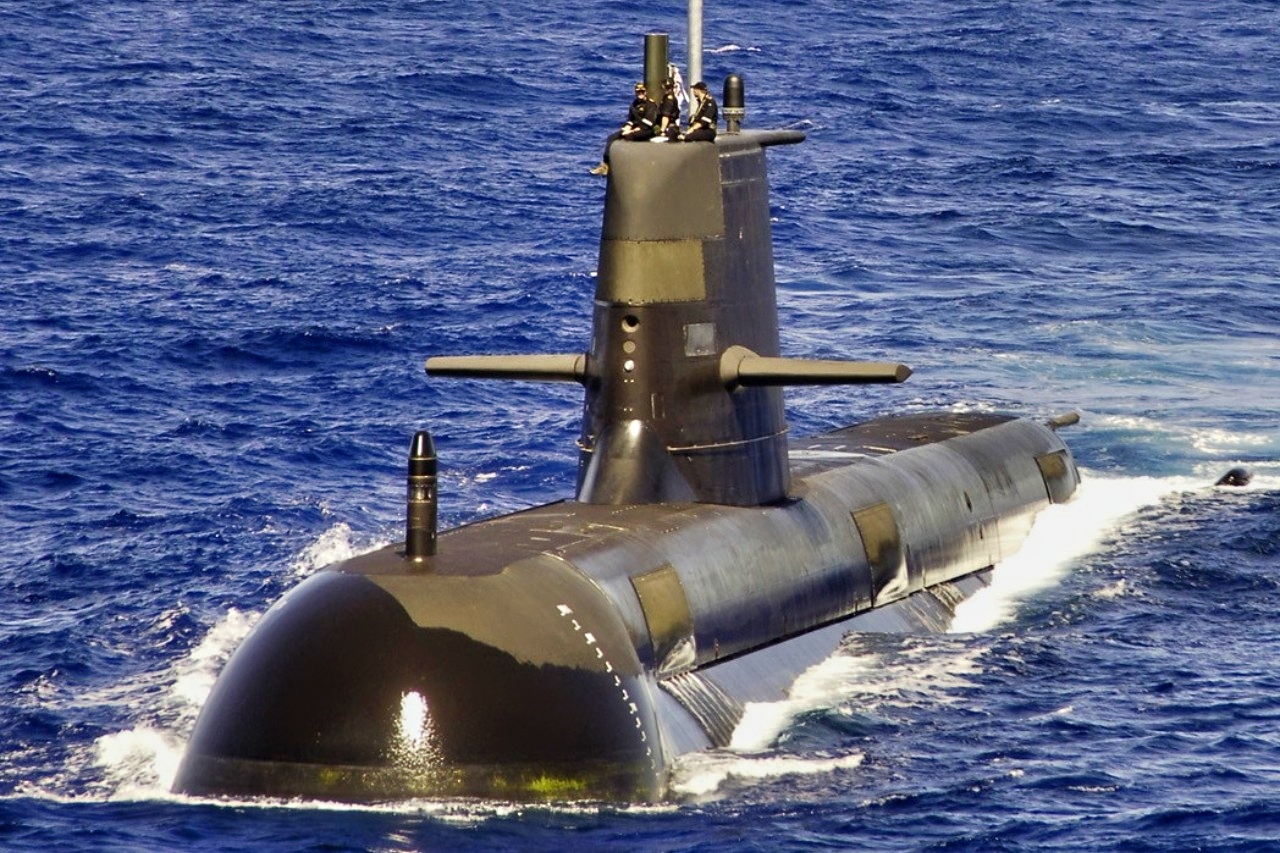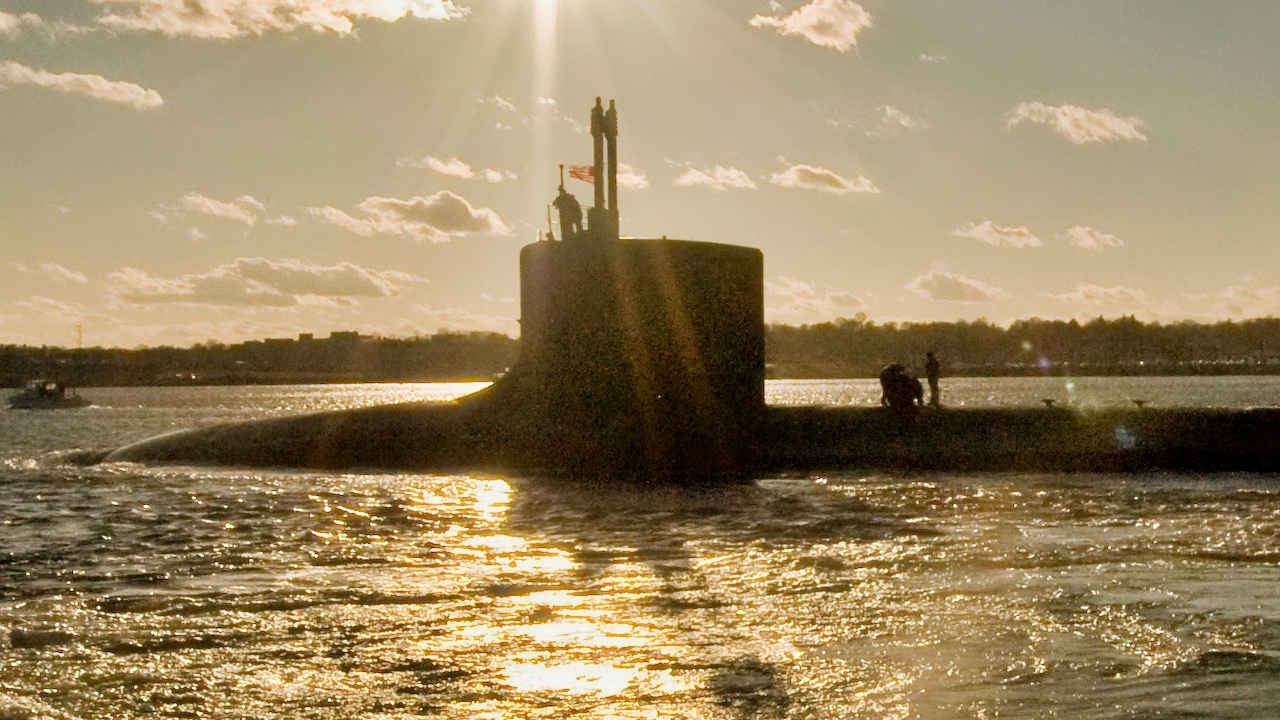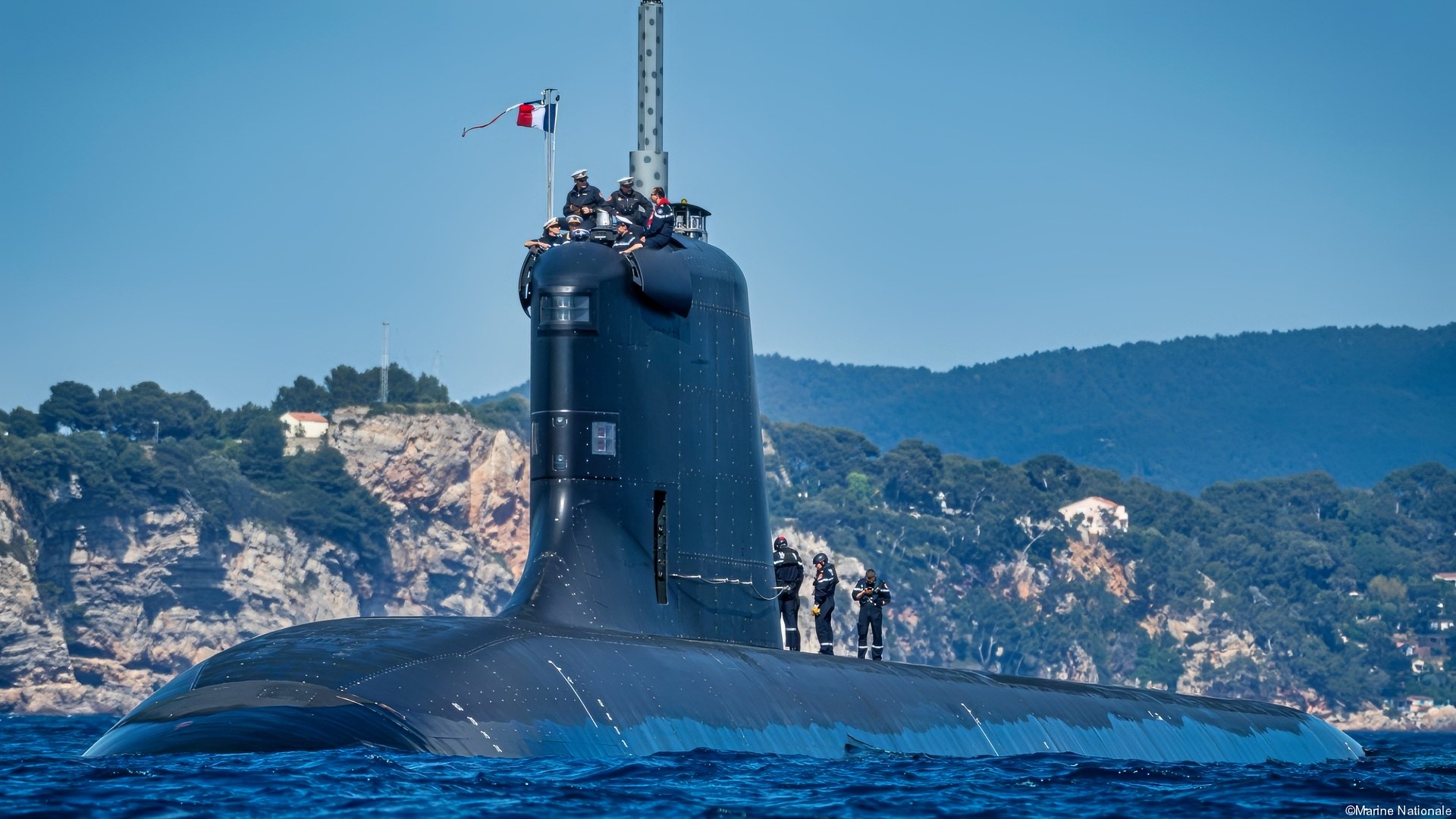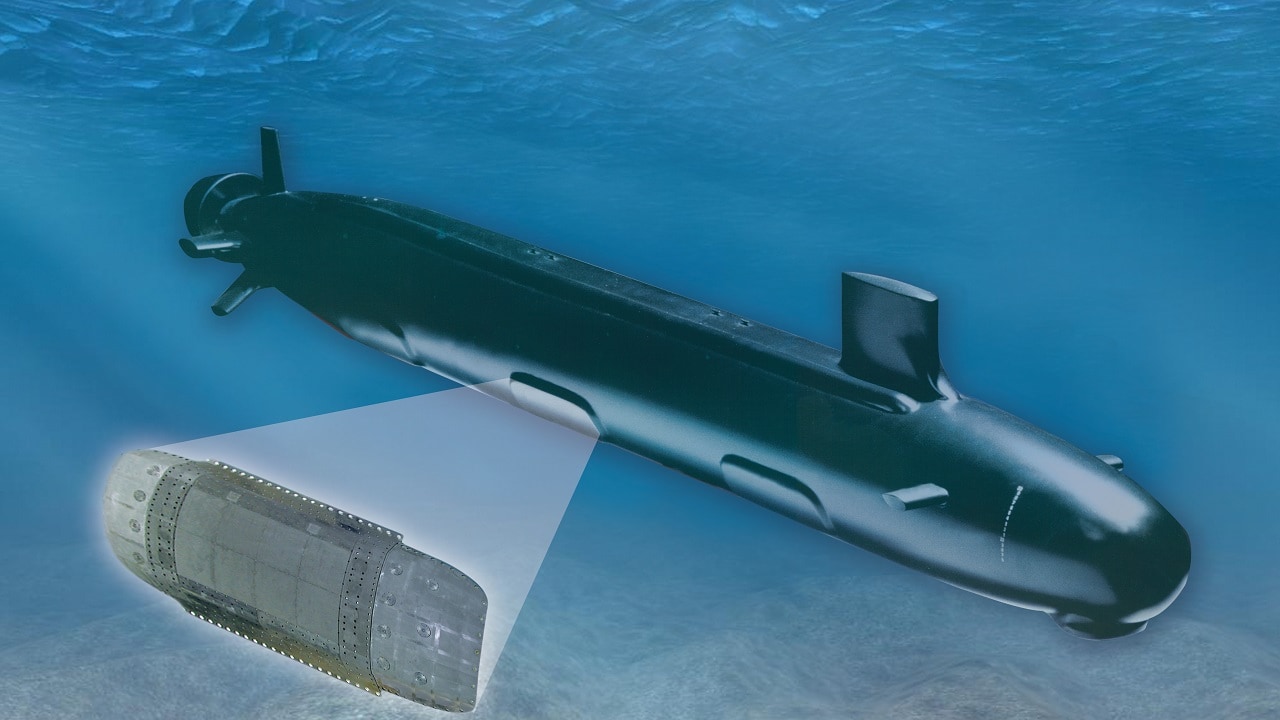Key Points and Summary – Four years after its launch, the AUKUS pact has cleared a major political hurdle with President Trump’s endorsement of the plan to transfer Virginia-class submarines to Australia.
-This move solidifies the alliance’s implicit goal of locking in a U.S.-UK-Australia coalition against China. However, massive challenges remain.

(July 25, 2006)- The Australian Submarine HMAS Rankin (Hull 6) and the Los Angeles Class attack submarine USS Key West (SSN-722) prepare to join a multinational formation with other ships that participated in the Rim of the Pacific exercise. To commemorate the last day of RIMPAC, participating country’s naval vessels fell into ranks for a photo exercise. RIMPAC includes ships and personnel from the United States, Australia, Canada, Chile, Japan, Peru, the Republic of Korea, and the United Kingdom. RIMPAC trains U.S. allied forces to be interoperable and ready for a wide range of potential combined operations and missions. Abraham Lincoln Carrier Strike Group are currently underway on a scheduled Western Pacific deployment. U.S. Navy photo by Mass Communications Specialist Seaman James R. Evans (RELEASED)
-The primary obstacle is the U.S. submarine industrial base, which lacks the capacity to build enough submarines for both its own Navy and Australia.
-Furthermore, progress on Pillar 2 (technology sharing in AI, hypersonics, and cyber) has been slow, hampered by “sclerotic” U.S. secrecy and export controls.
AUKUS Is 4 Years Old. Is It Actually Working?
AUKUS has taken an enormous step forward.
The initial deal involving Australia, the United Kingdom, and the United States seemed to languish over the past year as the Trump administration struggled to develop a balance on strategic policy towards the Pacific.
Like other traditional allies, the United Kingdom and Australia were left to wonder whether the new administration would abandon them.
However, as Andrew Latham pointed out in this publication, the deal cleared a major hurdle earlier this week when President Trump made clear that he plans to make good on one of its central elements: the transfer of Virginia-class nuclear attack submarines (SSN) to Australia.

The Virginia-class attack submarine USS Virginia departs for a six-week underway. During this deployment, Virginia will undergo an Operational Reactor Safeguard Examination and a Tactical Readiness Evaluation to assess the submarine’s reactor along with its capacity to combat casualties through damage control.
At just over 4 years since the agreement was concluded, it’s worth investigating how well it’s achieved its intended goals.
A Review of Intentions
The initial AUKUS deal had two explicit central pillars and an implicit third. The first expectation was that the deal would enable Australia to acquire nuclear attack submarines, replacing its fleet of conventional boats (and replacing French industry’s plan for its own successor boats) first with a Virginia-class submarine built in the United States and then by indigenous construction of advanced vessels with US and British input.
The second pillar was enabling technology cooperation between London, Canberra, and the United States on a previously unachieved scale, essentially extending the National Innovation Systems (NIS) of the three countries into a globe-spanning whole.
The third, no less important for being less explicit, was to lock in a long-term alliance which would require Australia, the US, and the UK to stand together against the potential of Chinese aggression in the Pacific.
Those AUKUS Submarines
The initial headlines covering the AUKUS deal focused on the big deliverable; Australia was initially expected to acquire several Virginia-class SSNs, to be based in Australia and crewed by Australians.
These boats would replace aging Collins-class conventional boats and represent a massive leap in Australian military capabilities.
Australia was expected to acquire three Virginia-class submarines as a stopgap until a new class of SSNs was developed across the three partners and built in Australian yards.
The biggest problem was evident from the start; the United States lacks the capacity to build enough submarines for itself, much less for itself and Australia.
This was the crux of the question that fell to President Trump last week, and his decision to endorse the deal clears a huge hurdle. In the fullness of time the problem disappears as Australia builds up the industrial capacity to construct its own submarines and the US takes advantage of the availability of Australian crews, bases, and investment to increase the strength of an allied submarine force in the Pacific. But much work remains to be done.
SSN Submarine Technology
The technology-sharing pillar of AUKUS envisioned cooperation not only in maritime technology but also in AI, drones, cyber, hypersonic, and other advanced, weaponizable technologies.
The fruits of collaboration include modifications to classification standards, the removal of regulatory barriers to technology transfer, and agreement on an open-architecture approach to systems development.
Given the competitive nature of the international defense export market, these goals are more difficult than many would assume.
It is also antithetical to the nature of the defense industrial base (DIB) and the NIS to share advanced capabilities rather than to conceal them. The US system is known to be particularly secretive and sclerotic in this regard.
With respect to deliverables, progress thus far is hard to see. However, AUKUS has made the problems of export controls and classification more evident in the United States, and there has been a realization that processes need to change.
Alliances
The announcement of a deal among three countries that have been strategic partners since at least the 1940s should not have been earth-shattering, yet it still surprised not only the global community but also the strategic communities in each country.
The deal was intended to bind Australia to the United States, make Australia a more effective defense partner, and give the United Kingdom a stake in key security and technological questions in the Pacific.
On these, it’s succeeded… mostly. The UK remains all-in, but skepticism in Australia about both the reliability of the United States and the wisdom of ditching the submarine partnership with France has grown.

Suffren-Class from France. Image Credit: Creative Commons.
For the US, even with renewed strategic interest in the Pacific, some have wondered whether bringing Canberra and London along for the ride will have much of a long-range benefit. Trump’s endorsement of the deal seems likely to soothe concerns in those two capitals, however.
The arrangement had an international impact beyond the deal’s partners. AUKUS nearly broke US relations with France, which had previously arranged a submarine deal with Canberra, leading to a furious response from Paris. Negative feelings were washed away by US-French cooperation following Russia’s invasion of Ukraine.
As the target of the deal, China reacted poorly. Several other potential partners expressed some interest, including Canada, Japan, and New Zealand. The erratic nature of Trump’s diplomacy has put any questions of expansion on hold, however.
AUKUS: What Happens Next?
AUKUS may not happen in its original form. Given President Trump’s disdain for the diplomacy conducted by his predecessors, his embrace of the deal is important.
Still, he won’t be the President who authorizes the transfer of submarines to Australia. But his endorsement will allow other aspects of the agreement to move forward and will represent an important signal to other potential partners. It also gives planners in London and Canberra a green light regarding the future of their strategic environments.
AUKUS has cleared a significant hurdle, but it remains a factor in the thinking of both its participants and its targets.
About the Author: Dr. Robert Farley, University of Kentucky
Dr. Robert Farley has taught security and diplomacy courses at the Patterson School since 2005. He received his BS from the University of Oregon in 1997, and his Ph. D. from the University of Washington in 2004. Dr. Farley is the author of Grounded: The Case for Abolishing the United States Air Force (University Press of Kentucky, 2014), the Battleship Book (Wildside, 2016), Patents for Power: Intellectual Property Law and the Diffusion of Military Technology (University of Chicago, 2020), and most recently Waging War with Gold: National Security and the Finance Domain Across the Ages (Lynne Rienner, 2023). He has contributed extensively to a number of journals and magazines, including the National Interest, the Diplomat: APAC, World Politics Review, and the American Prospect. Dr. Farley is also a founder and senior editor of Lawyers, Guns and Money.
More Military
The Los Angeles-Class Submarine Has a Message for the U.S. Navy
‘Never See It Coming’: A First Look at the NGAD F-47’s Bomber-Like Stealth
The Real Reason U.S. Military Recruiting Numbers Are Surging
The Midway-Class Aircraft Carrier Has a Message for Every Navy on Earth
The YF-23 Black Widow II Stealth Fighter Still Haunts the U.S. Air Force











Pingback: AUKUS? - Lawyers, Guns & Money